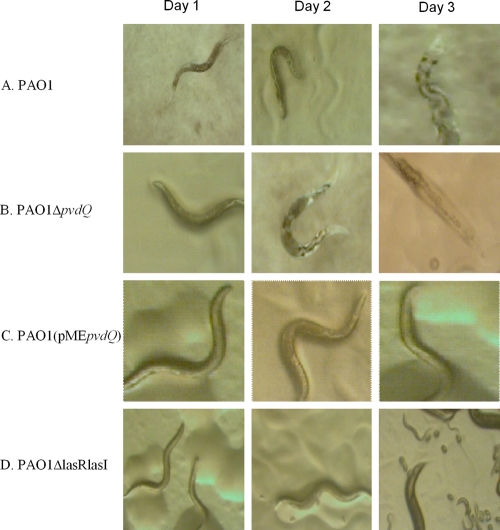FIG. 3.
Morphological appearance of the worms exposed to the different strains under slow-killing conditions. The morphological appearance of the worms at each of the 3 days postexposure to PAO1 wild type (A), PAO1-ΔpvdQ (B), PAO1(pMEpvdQ) (C), and PAO1-ΔlasRlasI (D). It is very clear from these pictures that in the case of the worms shown in both panels A and B there is progressive distension of the gut of the animals due to the colonization of toxic bacteria. In the case shown in panel B at day 3, the animal was already dead and started dissolving in the agar. When PvdQ is overproduced more than 65% of the animals exposed to it remain and look healthy even at the end of the third day (C) and continue to go through their life cycle at a normal rate. Lastly, all of the worms exposed to the quorum-sensing-negative strain survived and started laying eggs by day 2. After 72 h (D) the plate was already getting crowded with more eggs and many larvae (L1).

